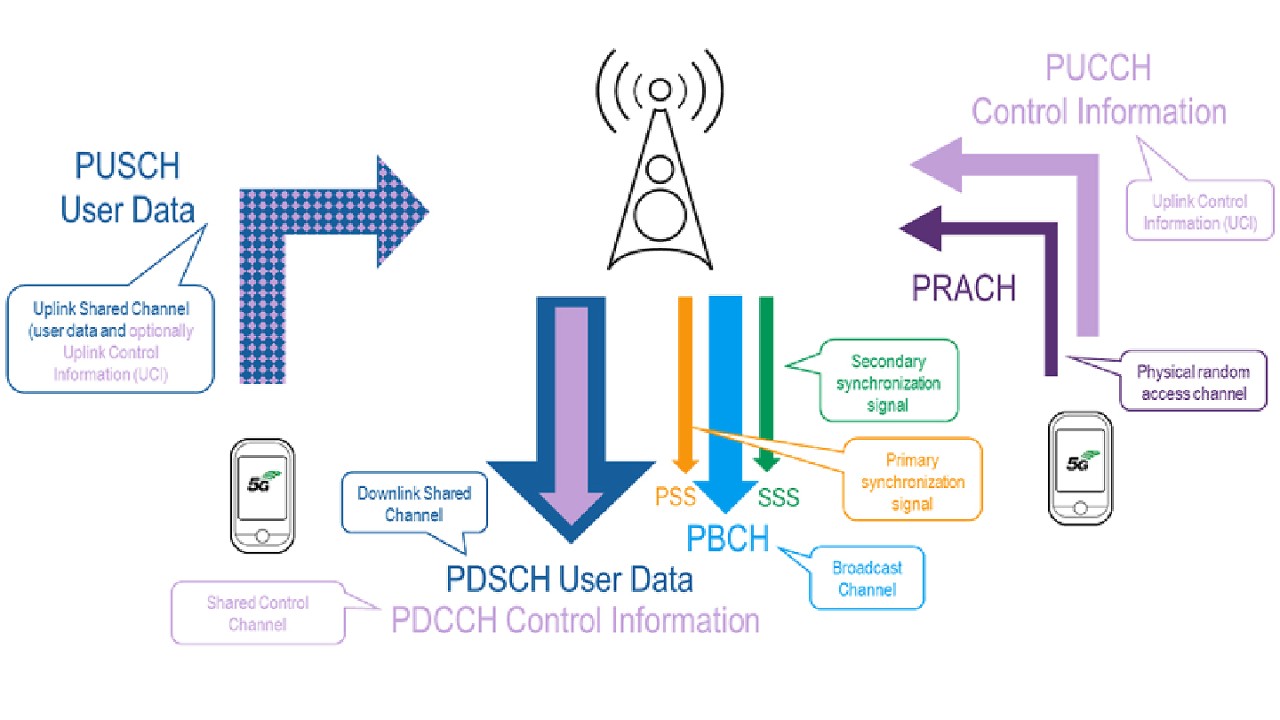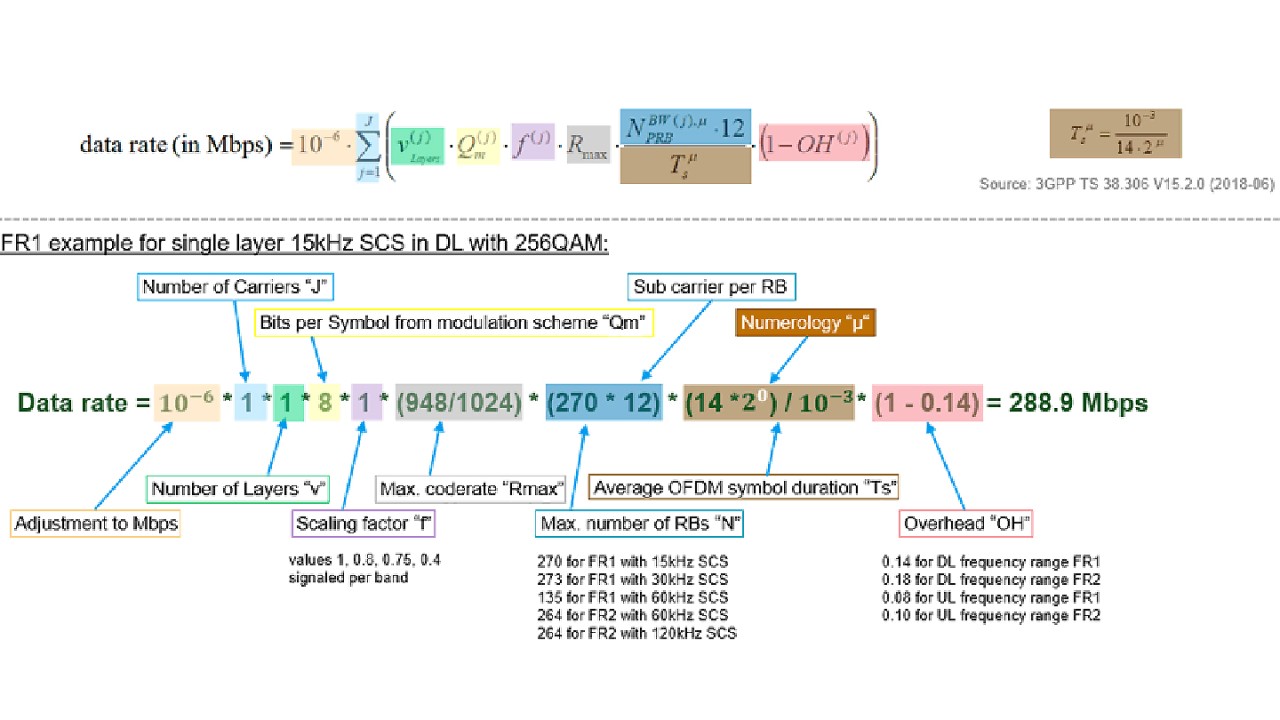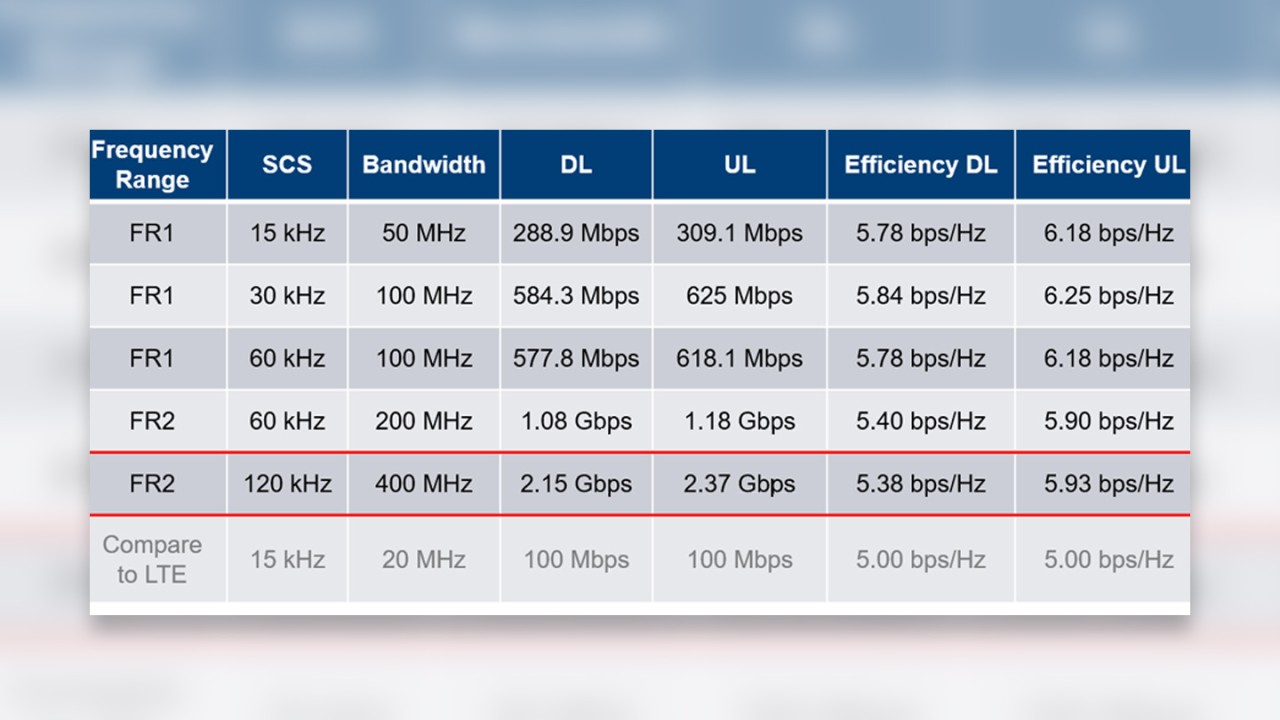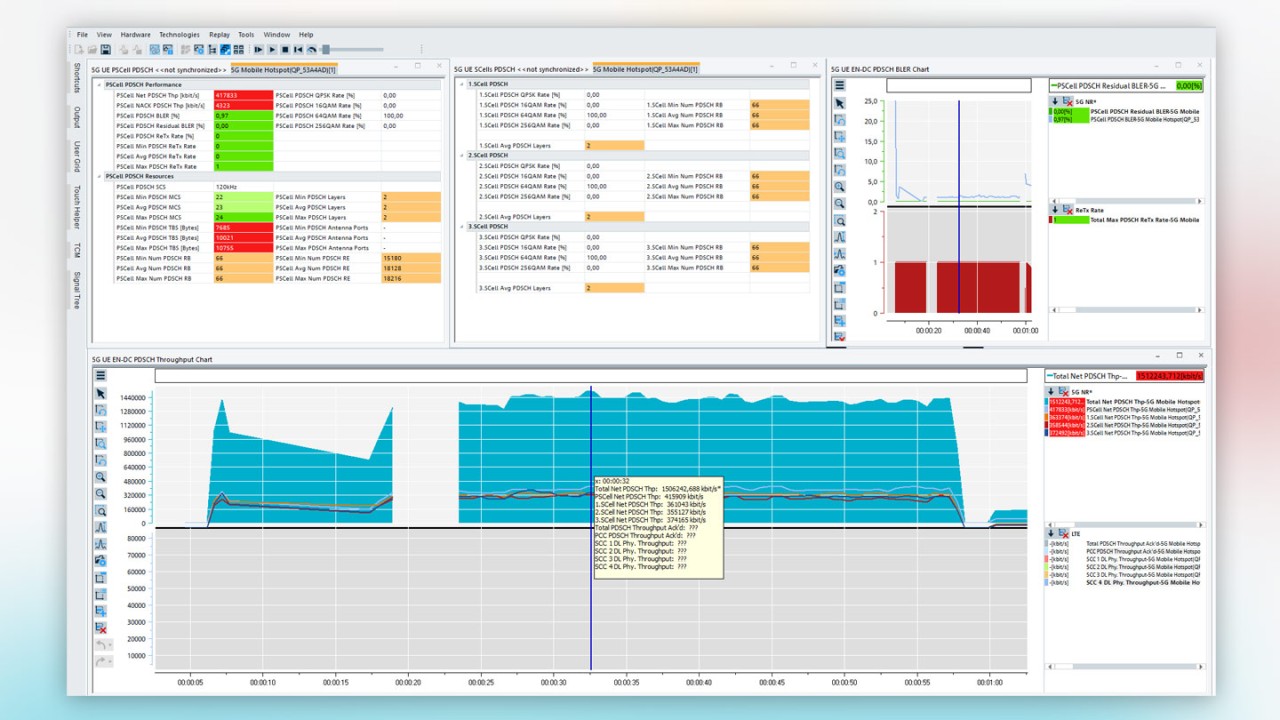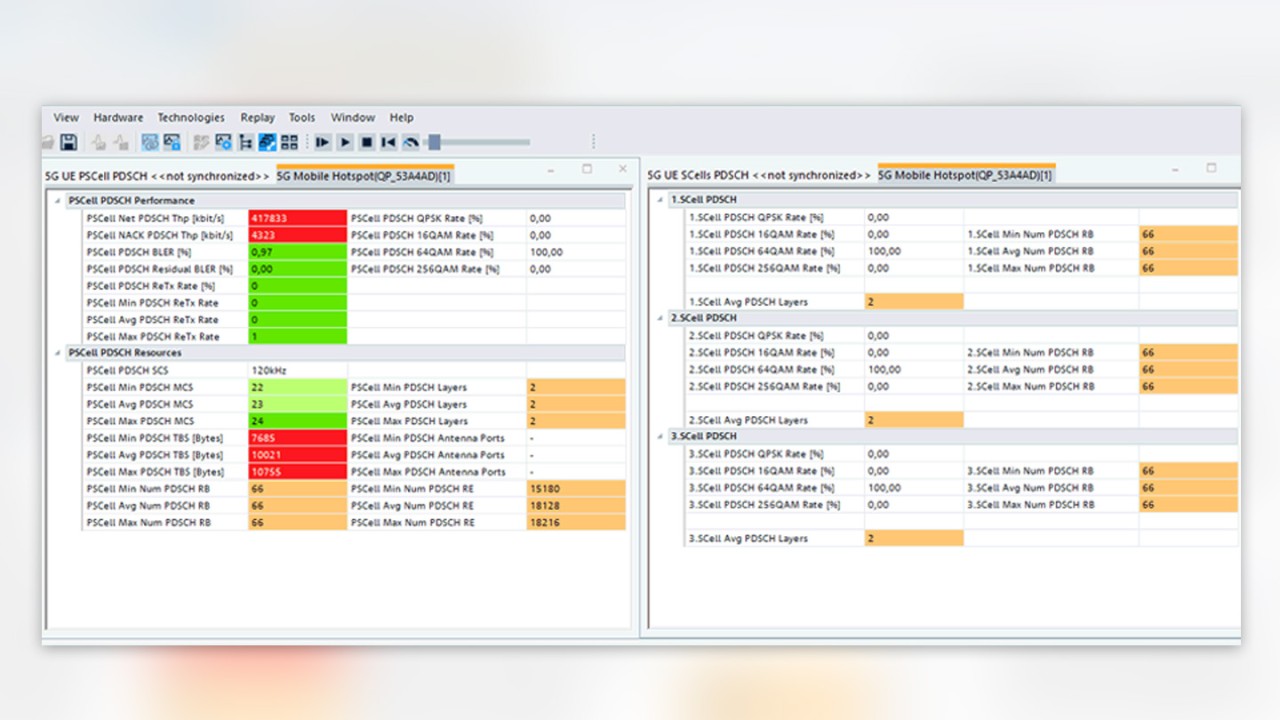Written by Gregor Tomic | December 12, 2019
Our 5G R&S®TSMx6 scanners are passive elements that can measure fixed blocks (Synchronization Signal Blocks or SIB) of 5G NR and verify RF. They do this without registering to the operator´s network. The scanners – combined with the R&S®ROMES4 drive test software featuring Automatic Channel Detection of on-air 5G carriers – can detect and decode network information on the beam index level. The setup can also decode Master Information Blocks (MIB) to provide an independent view of the quality of the 5G network.
Measure with scanners or 5G UE?
The approach of combining scanners and powerful drive test software is extremely valuable in the initial testing or early rollout phase of a 5G network. It helps customers to independently analyze the air interface’s coverage and interference.
However, the 5G air interface consists of many more channels. Scanner-based measurements are executed on the fixed broadcasting blocks in 5G NR, including the Primary Synchronization Channel (PSS), Secondary Synchronization Channel (SSS), and Physical Broadcast Channel (PBCH). Those are the only “always-on” signals that can be detected automatically.
All other channels are specific to the user equipment (UE). To properly measure the entire 5G NR air interface, 5G UE needs to be included in the measurement solution. The following illustration represents an overview of the 5G on-air channels and the measurement capabilities of UE and scanners, respectively.
As shown in the illustration, scanners can assure that the RF is in good condition and potentially able to deliver gigabit speeds by measuring the quality of beams/SSBs. UE and appropriate software need to be included to verify such high speeds and measure performance from the user perspective.
The R&S®ROMES4 drive test software supports much of the pre-commercially and commercially available UE that is based on market-leading chipsets and platforms such as Qualcomm Snapdragon 855 and Exynos 9820. UE with open diagnostic ports can be connected to R&S®ROMES4, and 5G measurements can be executed and recorded.
Reaching Gbit/s levels in theory
Unlike in LTE, the data rate in 5G networks is not defined as a table or maximum transport block sizes. Instead, the data rate has to be calculated based on the circumstances and higher layer settings. The formula below determines the calculation for 5G throughput.
Many parameters are considered, but the following are essential:
- J is the number of aggregated component carriers in a band or band combination, with a maximum of 16 component carriers for carrier aggregation.
- Rmax is the maximum code rate possible.
- v equals the number of layers; in the current release (Rel. 15), the maximum number of layers is 8.
- Q stands for bits per modulation symbol. Depending on the modulation scheme, Q = 1 for BPSK, 2 for QPSK, 4 for 16-QAM, 6 for 64-QAM and 8 for 256-QAM, which is the maximum allowed modulation scheme in the current release (Rel. 15).
- f is the scaling factor that is signaled via higher layers.
- NRB stands for the maximum number of resource blocks per bandwidth part.
It must be noted that the maximum data rate can be limited due to a certain UE capability. According to the formula above, we come to the following theoretical maximum throughputs per layer:
FR1 is the sub-6 (below 6 GHz) frequency range; FR2 (from 24.25 GHz) corresponds to the mmWave frequency range where bandwidth is not as scarce, and higher speeds can be achieved. As shown in the table above, FR2 has more available bandwidth, one of the main factors affecting theoretical speed.
For matters of comparison with real measurements, I am focusing on the red-framed row. For Subcarrier Spacing (SCS) of 120 kHz and bandwidth of 400 MHz, a theoretical throughput of up to 2.15 Gbps per layer in DL can be calculated. In theory, that is an impressive number for radio air interface, so let´s check it in a real measurement.
5G UE measurements: reaching Gbit/s levels
Investigating the theoretical maximum throughput is very important to confirm the quality of a 5G network. The screenshots below show results from measurements conducted in the FR2 band in Asia.
For the test, we connected an unmodified WNC device to a PC running R&S®ROMES4. To push the network to the limit, we first configured several capacity tests in R&S®ROMES4, which were then pushed to and executed on the WNC device. All tests run directly on the device, which helps to mimic the real user behavior during testing.
In R&S®ROMES4, several predefined views show details of the current throughput and the approach to achieve it. The “5G UE PSCell PDSCH” and “5G UE SCells PDSCH” views provide details of the DL concerning the parameters affecting throughput. If you remember, some of the main parameters having an impact on the theoretical maximum are bandwidth, the number of layers, SCS, and frequency. We investigated these parameters in this real measurement.
We realize that this measurement was performed in a network using 120 kHz SCS with 66 resource blocks per 5G NR cell, which is in line with the 3GPP standard. Most of the time, the higher-order modulation and coding scheme 64QAM was used.
Achieving those speed levels requires an active link adaptation. (In initial tests, the active link was fixed but is now cleverly implemented in the network.) The network actively controls the active link, which is constantly reasonably high, according to the environment. This means that the 5G UE gets more data bits and less coding/protection bits.
Moreover, to achieve higher throughput, the network performs carrier aggregation (CA) with 4 carriers in 5G, resulting in 400 MHz total bandwidth with 4 CA. Also, two layers are used across carriers, as depicted in the picture above.
5G UE measurements: conclusion and outlook
Although the 1.5 Gbps measured in this example is lower than the theoretical calculation of around 2.15 Gbps per layer (4.3 Gbps for two layers), this speed is quite impressive; and it shows how the network can balance between different aspects and cleverly use its resources to achieve very high data rates. Moreover, the processing capabilities of the UE are limited and not considered in theoretical calculations (some new 5G UE does not support 4×4 MIMO, so this has to be considered).
5G NR is a game-changing technology that embraces flexibility and aims to include different use case families – enhanced mobile broadband (eMBB), massive machine-type communication (mMTC), and ultra-reliable and low-latency communication (URLLC) – across industries. Current early network implementations are focusing on the eMBB part to show high data rates at the beginning.
The gigabit speeds that we see in current tests and initial rollouts (e.g. requiring 400 MHz bandwidth) will not be achieved when massive rollouts and adoption take place, because many users will share the spectrum and create interference among each other. However, those challenges are already being addressed with the introduction of innovative features in the latest 3GPP releases such as Dynamic Spectrum Sharing (DSS), which relies on both LTE and 5G resources.
The development of URLLC will be the next big thing, particularly for Industry 4.0 use cases like “smart manufacturing” or “smart warehousing”. Machine-type communication will still be handled via LTE, and 3GPP has just started work on mMTC for 5G, and its implementation will take some more time.
Learn more in our video series "Demystifying 5G" and on our dedicated 5G network testing web page.







